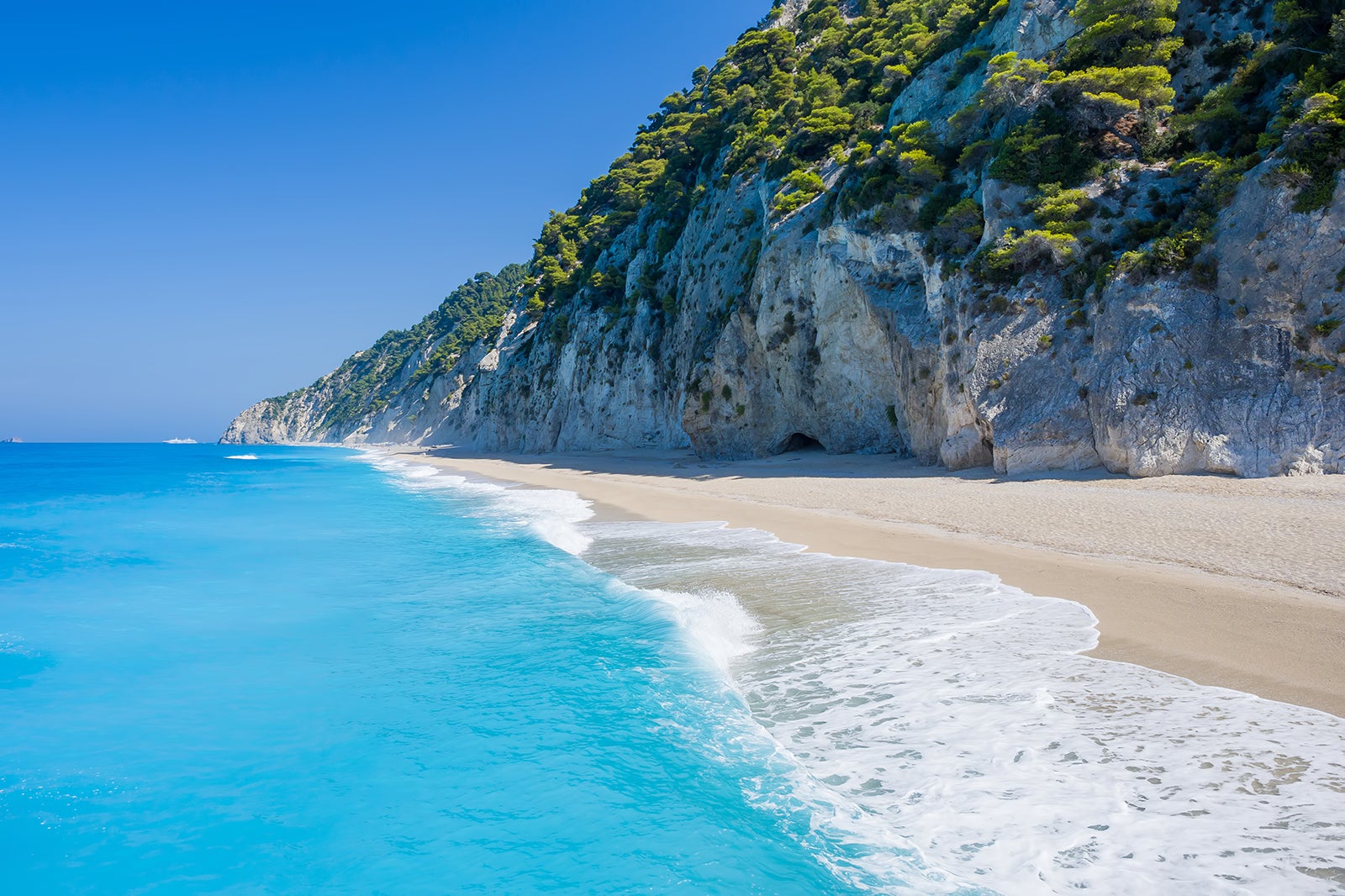Lefkada General Information
Lefkada Geographical Notes
Lefkada is an island in the Ionian Sea located in the middle of the group of islands called "Eptanisa" (The Seven Islands), along the west coast of Greece.
It is separated from the mainland by the channel of Lefkada, 25 meters wide, crossed by a mobile bridge. It is the only Greek island connected to the mainland.
It has an extension of about 300 square kilometers and is, together with the numerous islets that surround it, the smallest and least populated department in Greece.
About 73% of the soil is mountainous and reaches 1,182 meters with Mount Stavrota.
Small plateaus and small valleys with lots of greenery and fertile plains are shaped on the mountains. There are no large forests, botanically it has wonderful trees: pines are born spontaneously in the southwestern part, among the most common trees there are cypresses and centuries-old olive trees.
Its 117 km of coastline offers white cliffs and beautiful beaches with crystal clear waters. The western side is characterized by long and narrow beaches at the foot of rocks overlooking the sea with an indescribable sea for the intensity of its colors.
The beaches are all easily accessible via a circular road that goes around the island.
Its fauna is made up of many rare migratory birds; the lagoon area of the city of Lefkada is of great interest as it is a stop on their journey. In the lagoon, there are many species of rare birds such as swans, herons, lapwings, various species of seagulls, ducks, and geese.
Lefkada History
The name Lefkada is given by its southernmost promontory, Cape Lefkatas, with prominent white rocks where, according to tradition, the poet Sappho threw herself when Phaon refused her love. Cape Lefkatas was the terror of the ancient sailors and was already mentioned by Homer as the entrance to the underworld. On this head, there was the temple of Apollo replaced in modern times by a lighthouse.
Lefkada was already inhabited in the Neolithic period. Various excavations have unearthed remains from the Mycenaean era that demonstrate links with the inhabitants to the kingdom of Mycenae.
The identification of Lefkada with the Homeric Ithaca was a point of contention among researchers. The archaeologist Dorpfeld, based on the text of the Odyssey, identified the Homeric Ithaca in today's Lefkada and placed the palace of Ulysses in the Nidri area, even if researchers have not confirmed it to date.
In the 15th century, Lefkada was under the dominion of the Turks. Due to its geographical position, it was the center of the pirates of the Ionian Sea and its area was one of the most dangerous for navigation.
In 1684 the Venetians conquered it and remained there until the end of the 1800s, a period in which the island experienced relative peace and security. At the end of the 18th century, Venice was in decline and the island passed into the hands of the French. Later it passed under the protection of the Russians.
During the conflicts from 1809 to 1815, the Ionian islands fell under the rule of the English. But the differences between the inhabitants and the British ended with the revolt against foreign opponents. For 50 years the island lived in peace and bridges, roads, and aqueducts were built.
In the nineteenth century, the island was shaken by violent earthquakes, the most dramatic in '48 and '53. During the Second World War Lefkada found itself under the dominion of the Italians who tried to annex the island, removing it from the central government of Athens, but without success.
After 1960 began the improvement of the island with the peak in 1978 when the movement of tourists brought new life to the coasts. New settlements have been created on the east coast and during the summer the island is full of life.
Lefkada Climate
The dense vegetation, the explosion of flowers in spring, the countryside full of lush olive and cypress trees, is the result of the rich winter rains and the mild and temperate climate all year round.
From mid-May to mid-October it is summer, with temperatures ranging between 24 and 38 degrees. The sea breeze attenuates the heat and makes the months of July and August pleasant too.
The best months to visit the island are from June until mid-July and the month of September.


